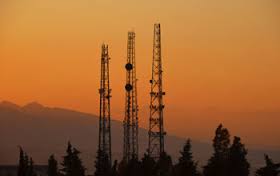 The United States is fast becoming a wireless nation. The demand for wireless devices in all sectors of our lives – from smartphones to smart utility meters – is driving the exploding demand for access to spectrum. By 2019, Cisco predicts there will be a seven-fold increase in data traffic.
The United States is fast becoming a wireless nation. The demand for wireless devices in all sectors of our lives – from smartphones to smart utility meters – is driving the exploding demand for access to spectrum. By 2019, Cisco predicts there will be a seven-fold increase in data traffic.
The Obama administration has been working hard to meet this demand, pledging to make 500 megahertz of additional spectrum available for mobile broadband by 2020. The Commerce Department’s National Telecommunications and Information Administration (NTIA), which manages the federal government’s use of spectrum, has been working with the Federal Communications Commission (FCC) and other federal agencies to make more federal spectrum available for commercial use. At the same time, we are working to balance the needs of federal agencies that rely on spectrum to perform a wide range of mission-critical functions – from communicating with weather satellites, to navigating passenger planes and protecting our nation’s borders.
Meeting the sky-rocketing demand for wireless technologies has required new approaches to freeing up spectrum beyond the traditional model of clearing spectrum for exclusive commercial use. Spectrum sharing between federal and nonfederal users also has to be part of the solution.
To further this effort, NTIA and the FCC sought public comment last summer on whether to launch a proposed “Model City” that could test the most advanced sharing technologies in a real-world setting. Testing these new technologies will help promote innovation in this field by enabling shared use of a variety of frequencies used by federal agencies, while at the same time supporting the development of new wireless technologies that require access to spectrum to function.
Last month, NTIA and the FCC co-hosted a roundtable discussion at the FCC to meet with those who submitted comments on the Model City Joint Public Notice and discuss the Model City concept and framework. Participants expressed great interest in the Model City concept as a groundbreaking way to demonstrate and evaluate innovative spectrum sharing technologies. The participants also recommended launching the proposal in more than one city.
Moving forward, NTIA and the FCC plan to host a public workshop this spring to gather more input on the Model City concept. Among the topics the workshop is likely to explore include what types of cities would be best for testing sharing technologies, how should these model city experiments be funded, and what frequencies and applications should be part of the test?
By looking for innovative ways and next generation technologies to meet the growing demand for spectrum while making the most efficient use of this vital resource, the United States will ensure it retains its leadership in wireless broadband innovation, which has been an important contributor to U.S. economic growth.

